There’s a sting in the tail of these striking Waterhouse works
A thought-provoking exhibition of work by 75 finalists chosen for this year’s Waterhouse Natural Science Art prize highlights the wonders of the natural world, as well as the myriad human-made challenges it faces.

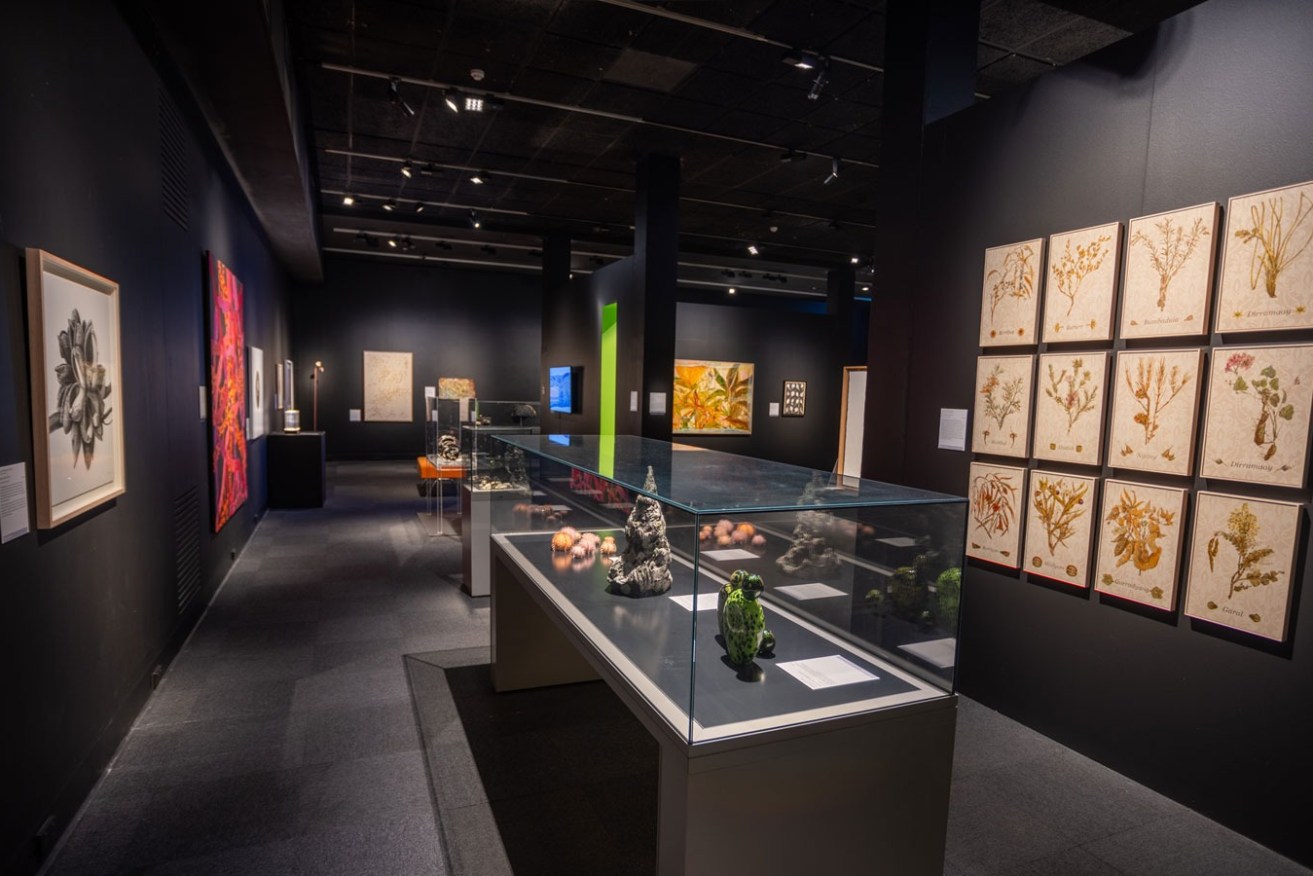
The work of finalists in the 2024 Waterhouse Natural Science Art Prize is on show at the SA Museum until June 10. Photo: Angus Northeast / supplied
The Waterhouse Natural Science Art Prize is awarded biennially to emerging and established artists, and this year – the prize’s 12th iteration – finalists in both categories have collectively produced one of the most outstanding exhibitions yet.
Satisfyingly diverse in form, the shortlisted artworks range from ceramics to watercolour, from glasswork to metalwork, from textile to audio-visual footage. In concept, imagination and skill, these works are curated to allow for viewers to enjoy the synchronicities that create a dialogue between objects.
In the emerging artist category, Lucy Billingsley’s Sculpted Spines, a cluster of ceramic sea urchins in shades of rose and apricot with glittering glass spines, speaks to Joanne Knott’s Hakea laurina (Pincushion hakea), a soft watercolour in similar shades and a shape that echoes the urchins’ spiky forms. In the open category, the large, ridged ceramic hummocks of Charmain Hearder’s Eolian Saltation feel like a companion to Emma Young’s smaller blown glass work, Not All that Glitters is Gold.

Lucie Billingsley, Sculpted Spines.
The winners of the two categories contributed works rich in concept, beauty and imaginative form. Taking the open category prize, Gulumerridjin (Larrakia), Wardaman and KarraJarri Salterwater artist Jenna Lee’s sculpture Grass Tree – Growing Together is a delicate work made from the pages of an old Aboriginal language dictionary containing errors made by its non-Aboriginal lexicographers. The resilience of First Nations language, surviving colonisation, loss and change parallels that of the grass tree which regenerates after intense bushfire.

Grass Tree – Growing Together, by Jenna Lee, won the open category of the 2024 Waterhouse Natural Science Art Prize. Photo: Angus Northeast
The emerging category prize was won by Queensland-based artist Andrew Gall – a pakana (Aboriginal man) from lutruwita (Tasmania) – with his 3D-printed shell necklace Coming Together. The traditional, sacred kanalaritja shell necklace strung with delicate shell-beads in pearlescent ocean shades of 3D-printed porcelain comments on the threat to marine life due to climate change and the acidification of the oceans.
Emerging artist Kat Parker’s Discarded II (Bramble Cay Melomys), a work constructed from fragments of linocut on handmade paper and shaped with UV resin, shrink plastic and glue into a stunningly detailed, life-sized model of the recently extinct native rodent Bramble Cay Melomys, counterpoints Jenna Lee’s winning work by demonstrating the fragility of species affected by human activity.

Kat Parker, Discarded II (Bramble Cay Melomys).
There are also exquisite pieces in metalwork, such as emerging finalist Connor Feltus’s detailed Cicada Brooch in copper, sterling silver and rokusho patina; open finalist Regine Schwarzer’s Native Twig Spoons, adorned with seed pods of patinated brass; and Sophie Carnell’s Tender Treasure (in the open category), a collection of delicate silver replicas of rare Bruny Island plant species arranged in silver boxes – as if in an museum’s archival collection – that highlight their beauty and fragility.
The judging panel won’t have had an enviable task this year, with so many exceptional finalists to choose from. Lee and Gall are both worthy winners, but there are others that were likely close contenders. The People’s Choice award allows exhibition-goers to vote for their own favourites, which is likely to stimulate hearty debate among friends and family. All works are for sale, with many already spoken for in the opening week of the exhibition.
A thoughtfully curated exhibition of artworks of the highest calibre, this year’s Waterhouse Prize highlights the beauty of the natural world as well as the issues that are becoming increasingly pressing. It is one not to miss.
Works by the finalists in the 2024 Waterhouse Natural Science Art Prize are on show at the South Australian Museum until June 10.
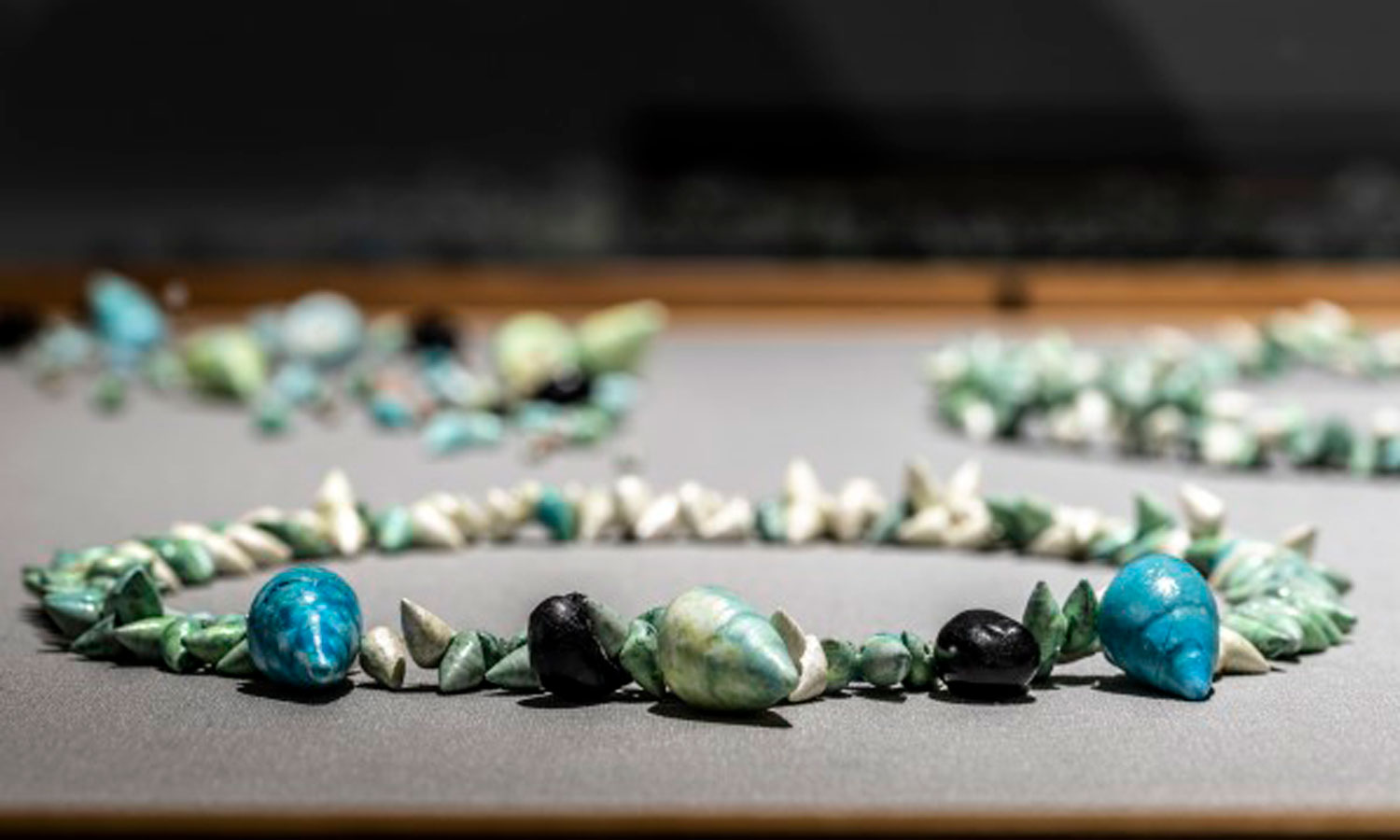
Andrew Gall, Coming Together, emerging prize winner. Photo: Andrew Willis
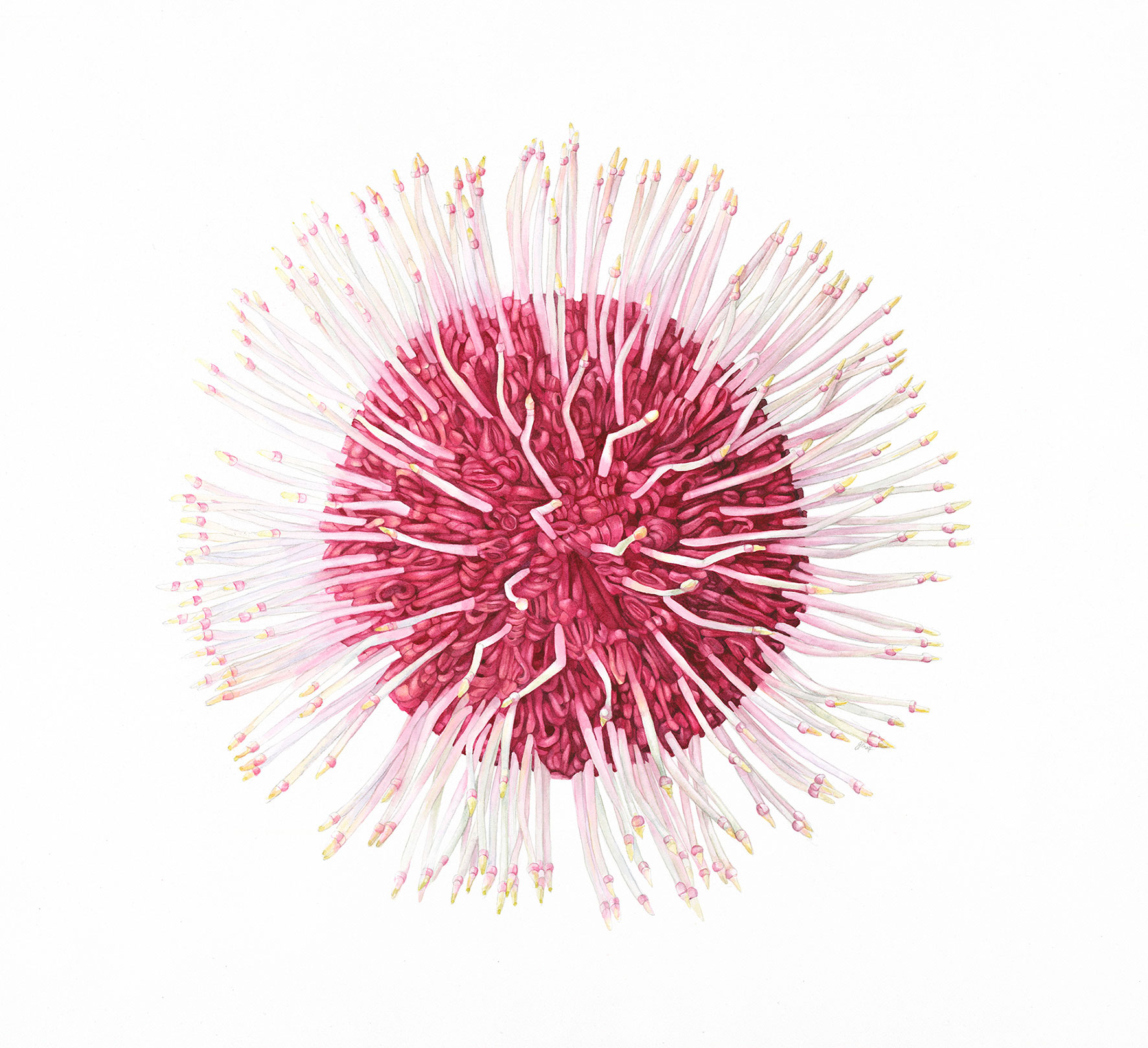
Joanne Knott, Hakea laurina (Pincushion hakea).
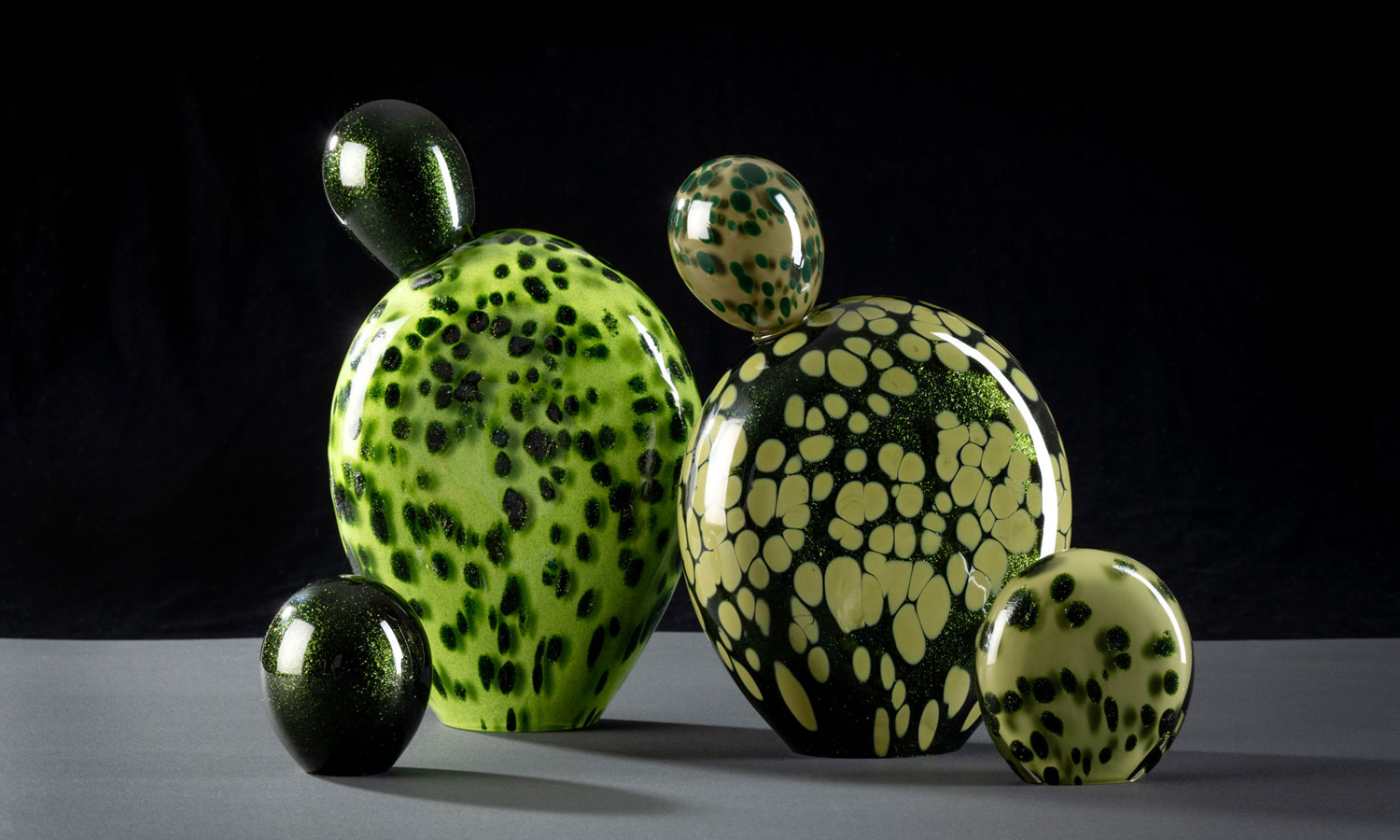
Emma Young, Not All that Glitters is Gold.
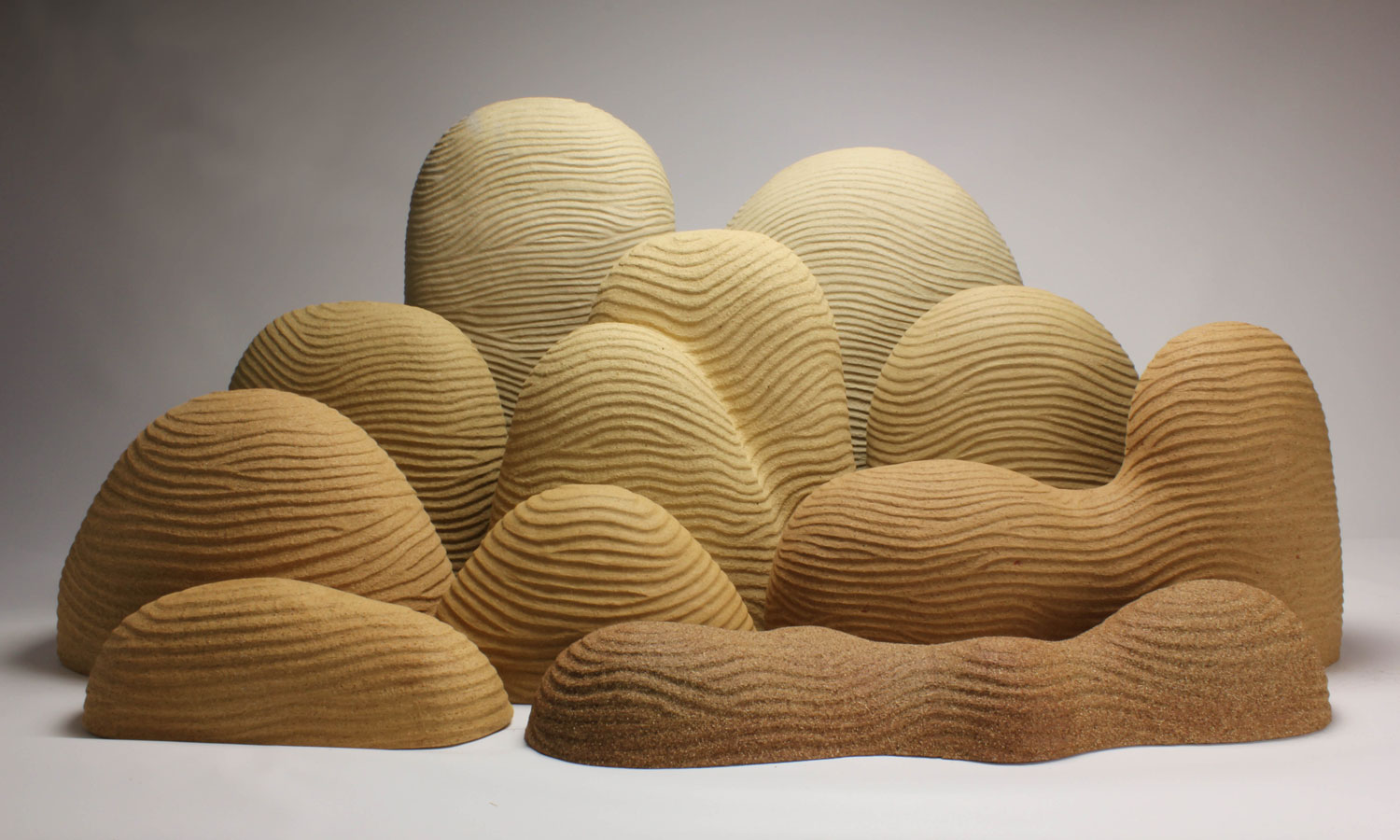
Charmain Hearder, Eolian Saltation.

Regine Schwarzer, Native Twig Spoons.
This article is republished from InReview under a Creative Commons licence. Read the original article.
InReview is an open access, non-profit arts and culture journalism project. Readers can support our work with a donation. Subscribe to InReview’s free weekly newsletter here.
![]()




